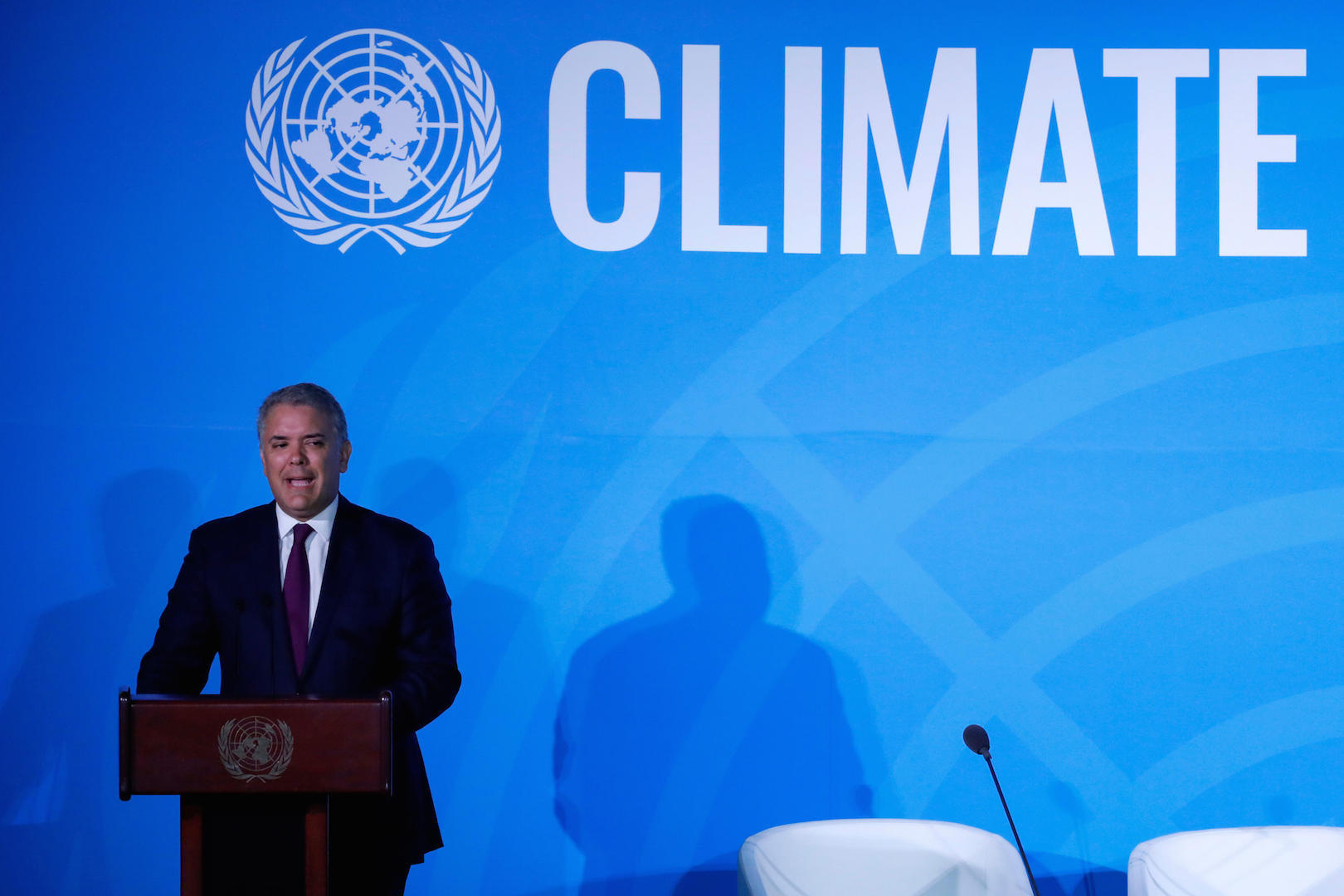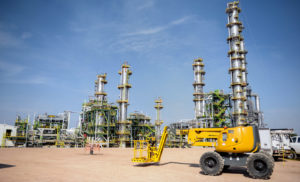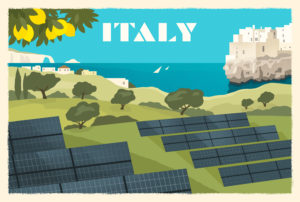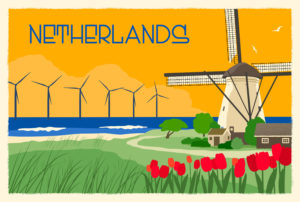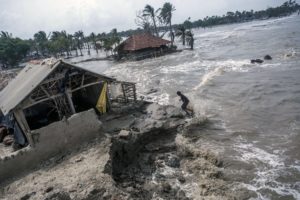Five years on from the approval of the landmark Paris Agreement on climate change, Latin American countries are preparing to present a new round of climate pledges, expected in the coming months. However, big regional emitters Brazil, Mexico, and Argentina are diverging from Paris goals, and meeting their existing targets is hampered by widespread deforestation and the promotion of fossil fuels.
5%
of the world's emissions are from Latin America
Nationally Determined Contributions (NDC) are national plans in which countries set targets for mitigating or reducing greenhouse gas emissions and adapting to the effects of climate change. They must be updated every five years and always be more ambitious, according to the Paris Agreement.
Most countries in Latin America presented their first climate NDCs in 2015 and 2016. Yet, with the exception of Costa Rica, all were regarded as insufficient in helping to meet the Paris Agreement’s goal of limiting temperature rise by 2°C, or ideally 1.5°C, by the end of the century. Now, new contributions are expected that are closer to that target.
“The region has a discourse that is not consistent with practice. All countries committed to climate plans in 2015 but few have made progress in implementing them,” says Isabel Cavalier, co-director of NGO Transforma in Colombia. “Now is the time to take advantage of the world’s signal for more climate action.”
But the path to greater ambition is not easy. Climate action is far from being a priority in Latin America, a region marred by economic and social crises, and where financial support is fundamental. The pandemic and a lack of ‘green’ policy choices in countries’ economic recoveries only accentuate the problem.
The region accounts for 5% of global emissions but the share is rising. The effects of climate change are already acutely felt, from extended droughts to heavy rainfall. Moreover, the region’s political fragmentation renders a common climate agenda almost impossible.
“Latin America has been fragmented for 20 years. It is not only seen in the ideology and politics of each of the countries, but also in the capacity to articulate decisions and agree on minimal issues,” says Manuel Pulgar Vidal, the global leader of Climate and Energy at the World Wildlife Fund (WWF).
First announcements
While the new NDCs will be officially unveiled in the coming months, some countries from Latin America will be presenting their climate plans at this Saturday’s United Nations Climate Ambition Summit. The meeting aims to maintain momentum following the postponement of the COP26 climate conference to 2021 because of the pandemic.
Colombia is one of those presenting its new target, which President Ivan Duque announced in late November. The country aims to reduce its emissions by 51% by 2030 through an energy transition, clean mobility, a reduction in deforestation rates and planting trees throughout the country. Details will follow.
“By 2030 we are going to commit to a clear and specific, multi-sectoral agenda to achieve this 51% reduction in GHGs. This is an important commitment in the Latin American context and also globally, which shows that together we must fulfill this purpose in order to contribute to the protection of the planet,” Duque said.
Latin America has a discourse that is not consistent with practice. All countries committed to climate plans in 2015 but few have made progress in implementing them
Colombia will implement a total of 29 adaptation measures and more than 30 climate change mitigation measures. The commitment was welcomed by UK Prime Minister Boris Johnson, who will host COP26. However, climate experts said it will not be easy to implement.
Deforestation is a serious problem for the country. The carbon released by cutting down trees accounts for 36% of total emissions. Meanwhile, the cleaning of the energy sector has been slowed by repeated attempts by the government to exploit new, unconventional oil and gas reserves via fracking. In 2015, Colombia committed to reducing its emissions by 20% by 2030.
Announcements are also expected from Peru, which is finalising the details of its new NDC. The process suffered as a result of the ousting of President Martin Vizcarra. The country is set to commit to cutting its emissions by 40%, a 10% improvement compared to the 2015 target.
The goal is ambitious, according to Pulgar Vidal, who is a former Peruvian environment minister. But he believes the country could commit even more: “The climate leadership we used to have has been thrown away in recent years. We must move forward with an energy policy based on renewable sources.”
Regional climate leaders
While most countries in Latin America are preparing new climate targets, having struggled to progress in the implementation of previous ones, Chile, Costa Rica and Uruguay have attracted praise.
Chile was one of the first countries to present its updated climate contribution in early 2020 after chairing COP25 in Madrid. The new NDC is more ambitious and will peak emissions in 2023, if all measures are implemented.
Sebastián Piñera’s government has also committed to closing all coal-fired power plants by 2040 and plans to become a leading country in green hydrogen production, which would allow it to boost renewable energies. Furthermore, he has presented a bill to achieve overall carbon neutrality by 2050.
“Despite its social crisis, Chile was able to increase its ambition. It realised what the new clean economy implies and that will pay off. The south of the country could benefit from the rise in temperature by being more productive, but it still decided to tackle the problem,” says Pulgar Vidal.
Similarly, in 2019 Costa Rica presented its plan to decarbonise by 2050, which includes annual goals and actions across all sectors of the economy. It highlights objectives for electrifying public transport, improving agricultural and livestock practices, and energy efficiency and waste management.
It is the only country in Latin America whose climate NDC presented in 2015 is considered in line with the 2ºC objective of the Paris Agreement. Now, the Carlos Quesada government is working on its new NDC, currently under public consultation, which will set an emissions target that is in line with 1.5ºC.
Finally, Uruguay presented its first NDC in 2017. It plans to launch the new one in 2022. However, the country has already taken significant steps towards greater climate action. Its energy matrix is almost 100% powered by renewable sources following strong growth of solar and wind energy over the past decade.
The country has committed to developing a carbon-neutral strategy. Work began on it in September. Uruguayan capital Montevideo has already introduced its first electric buses and in rural areas better land use practices for the agricultural sector are being used to further reduce greenhouse gas emissions.
These three countries frequently highlight the economic gains that decarbonisation can bring to their economies. A recent report by the Inter-American Development Bank, for example, showed that implementing Costa Rica’s decarbonisation plan would bring US$41 billion in economic benefits over the next 30 years.
Lack of ambition
Uncertainty remains over Argentina’s, Mexico’s and Brazil’s next steps in tackling climate change. The governments of Alberto Fernández, Andrés Manuel López Obrador and Jair Bolsonaro are frequently questioned for implementing policies that are out of step with regional vanguards Costa Rica or Chile – and which impede climate action in Latin America.
Mexico convened an intergovernmental dialogue in April to update its 2015 NDC but the process was interrupted by the pandemic. NGOs that participated in discussions said the government failed to discuss concrete mitigation or adaptation measures, focusing instead on the related gender and human rights issues. There was no discussion of the new targets within the Inter-Ministerial Commission on Climate Change, which must formally approve the NDC.
Although the government publicly expressed its intention to present its climate commitment this year, the launch date has already been delayed several times. However, environmental organisations anticipate that there will be no improvement on the previous NDC’s emissions reduction commitments.
“We are not in a position to meet our current climate commitments so I don’t imagine anything more ambitious would be presented,” said Jorge Villareal, director of climate policy at the NGO Iniciativa Climática. “Mexico should give a political signal and reflect on its climate policy.”
AMLO’s government considers oil a strategic resource and seeks to increase its use for electricity generation, increasing investment in the exploration and extraction. At the same time, investments in renewable energies have slowed, despite a major 2015 energy reform that encouraged them.
Argentina will also present its new NDC in the coming weeks and will preview its content at Saturday’s UN Summit. The government presented its first NDC in 2015 and then updated it in 2016. The current goal is to cut emissions by 18% without foreign financial support and by 37% with support.
So far, President Alberto Fernández has not introduced green stimulus policies to boost economic recovery in the wake of the pandemic, and has instead encouraged fossil fuels, especially shale oil and gas at Vaca Muerta. In addition to this, deforestation is rising and the agricultural frontier, often responsible for forest loss, is expanding.
“The level of ambition of Argentina’s NDC has to be double what it is today and must include a peak in emissions,” says Enrique Maurtua Konstantinidis, senior advisor on climate policy at the Fundación Ambiente y Recursos Naturales (FARN). “It is essential that the participation of renewables is expanded.”
This week, Brazil also presented its new NDC, following closed door discussions between government ministers that, unlike Costa Rica, involved no civil society participation. Either way, the plan represents no improvement on the 2015 climate commitment as emissions reduction goals stayed at 37% by 2025 and 43% by 2030.
The government included a long-term goal to achieve carbon neutrality by 2060 in the NDC. But it’s framed as an “intention” and not an actual goal. Brazil has also requested that it be paid US$10 billion per year to ‘address the numerous challenges’ it faces, including the conservation of native vegetation in its various biomes.
Bolsonaro threatened to take Brazil out of the Paris Agreement during his 2018 presidential campaign, and at the beginning of his administration. He later backtracked and decided to maintain Brazil in the accord. His government has since set about dismantling environmental protection agencies and implementing policies contrary to the Paris goals.
The whole world was waiting for what Brazil could present. But it looks like the government hasn’t done its homework
In its 2015 NDC, Brazil committed to halting all illegal logging by 2030, a commitment that is now absent from the updated pledge. The word “deforestation” doesn’t appear once.
In a statement, Brazil’s Climate Observatory, a watchdog, said the new climate pledge is “insufficient and immoral” and that “the world has changed but Brazil’s goals haven’t”.
“The whole world was waiting for what Brazil could present. But it looks like the government hasn’t done its homework,” said Carlos Rittl, former director of Brazil’s Climate Observatory and now a researcher in Germany. “There’s no increased ambition and a lack of transparency. Overall, there’s no good news coming from Brazil’s NDC.”
